

















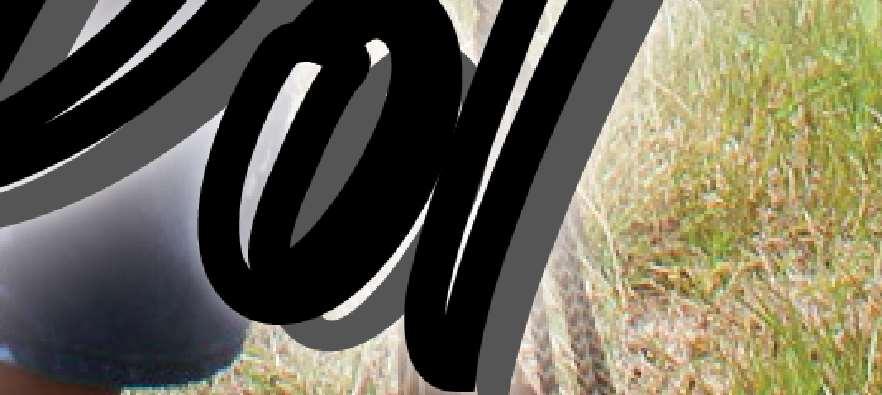




THElivelihoodoflocalswillbesignificantly enhancedfromthefarfetchedvillagesofRegion Nine(UpperTakutu/UpperEssequibo)following theinterventionofasolar dryerprocessingfacility inNappiVillage.
TheresidentsofNappi andsatellitecommunities willseethecompletionof amulti-million-dollarsolar dryer,whichwillbefully operationalsoon.
Atpresent,theconstructionofphaseoneof thephysicalstructureof the20-footby40-footsolar dryerandshedwascompleted.
However,anevaluation isbeingconductedtoensureallrequirementsare metbeforeproductiontrials andtrainingsessionsare intensifiedforbeneficiaries oftheproject.
Fruitsthatwerepreviouslywastedwillnowbe puttogoodusetomakelocalproductsofhighquality andstandards.
Thefacilitywillalso employvillagers,thusen-
ablingthemtohaveastable income.
Meanwhile,resident andformerToshao,Samuel FredricksofNappiVillage, hassinceexpressedhissatisfactionwiththepaceof theprojectimplementation.
“Foryears,wehave dreamedofhavingsucha facilitytoaddvaluetowhat weproduce.Now,theGuyanaMarketingCorporation ishelpingusrealisesuch adream.Asacommunity, wearepleasedwiththe constructionofthesolar dryer,”hesaid.
Primarilyanagrarian community,NappiVillage islocatedintheRupununi Savannahsandisnestled attheedgeoftheKanuku MountainsalongtheNappi andMaipaimacreeks.
Itisthehomeofoneof Guyana’snineIndigenous nations–theMucushi,who stilluseeco-friendlyagriculturalpracticestocultivatetheirlands,whichis themainsourceofincome andfoodsecurityformany familiesthereanditssatellitecommunities.
TheG$4Msolardryer, whichisfundedwithresourcesfromtheMinistry ofAgriculture’sintegrated agricultureproject,was designedattherequests offormerToshaoSamuelFredricksaspartofa comprehensiveagricultural plantoimprovefoodsecurityanddiversificationof livelihoodinNappiVillage anditssurroundingcommunities.
Aspartofhisadvocacy,Fredricksfurtherhighlightedtheimportanceof value-addedproductionas animportantstepforward tosignificantlyenhancethe marketabilityofproducts throughenhancedpackagingandlabellingaccording toregionalandinternationalstandards.
AccordingtoFredricks, “Ithascomeatatime wherewehavegraspedthe visionofHisExcellency PresidentDr.IrfaanAliof havingafood-securecommunityandcountryatlarge. Thevisionistomakethe communitiesmorefoodsecure.Weintendtoproduce

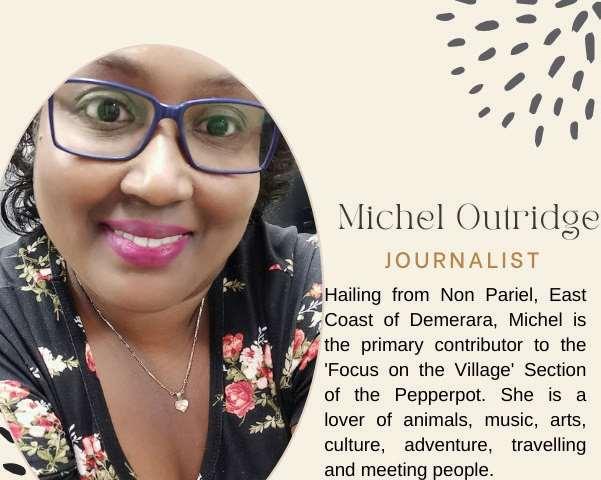










flourfromeddoes,plantain, andsweetpotatoes.”
Healsonotedthatthe operationofthesolardryer willencouragefarmersto increaseproductionbecause theywillbeabletoaddvalue
totheproductionprocessby usingthesolardryertodehydrateandpackagetheircrops, includingseasonalfruitssuch ascashewsandmangoes, whichinthepastoftenlanguishedandperisheddueto
lackofproperpost-harvest managementandlackofmarketaccess.
Duetoitsremotelocation, NappiVillagedoesn’thave thenetworkandresourcesto employitslocalsfully,and althoughmostresidentsearn throughfarming,fishingand hunting,jobsaren’teasyto comeby.
Whenfullyoperational, beneficiariesoftheprojectwillbeabletoproduce 10,000kgspermonthof mangoes,groundprovisions, fruits,andthyme.
Atoneoftheawareness sessionsheldrecentlybythe GuyanaMarketingCorporation(GMC)atNappiVillage, agro-processorsfromNappi, HiawaVillage,andParisharawelcomedtheinitiative, notingthatsuchafacility wouldboosttheirproduction capacityandmarketability sincetheyarecurrentlyusing traditionaldryingmethods.
SomeoftheproductsemanatingfromNappiVillage anditssurroundingcommunitiesincludecassavabread, driedgarlic,garlicsauce, driedthyme,fruitjuice, groundpepper(chitai),and cassavacassareep.
Duringthesensitisationsession,theGuyana MarketingCorporationaddressedissuespertainingto foodsafety,packagingand labelling,amongothertopicstosupportthesuccessful operationofthefacility whencompleted.
FORsomepeople,boldacademicpursuitsaresimply adegreeonawalloraseriesofnumbersonapage. Forothers,thepassionto learnmoreisapathto self-developmentandempowerment.ForDr.Vashti LavinaBudhram,thedrive toknowmorehasbeena constantburningfirefor morethantwodecades.
NowaProfessoratthe MandlCollegeofAllied HealthinNewYork,USA, Dr.Budhramstandsasoneof themostprestigiousfigures inherfieldofeducational leadership.TheGuyanese academicisaninspiration andchampionforpersonal developmentthrougheducation.Today,sheserves asaremindertocountless youngGuyanesewomenof thetrueextentofacademic excellence.
TheMakingofan Educator
Adaughterofthesoil,Dr. Budhramwasbornandraised inthecountyofBerbice,with herrootsinasmallcommunitycalledEdinburgh.Born intoasupportivefamily,she quicklydiscoverednotonly herpassionforeducationbut alsoherimmensedriveto teachothers.
Thispassionledtoher firstjobandlatershapedher careerpath.“Iwasraisedin afamilyofsix.Mymom,dad andsiblingssupportedme throughoutmyeducational journey,”shereminisced.
whenIwas19yearsold.I continuedtoworkasanassistantmistress.”
Anacademicshiftfrom GuyanatoAmerica
VolikaJaikishunandShafiranBhajan,Dr.Budhram said,weremajormentors toher.
ucationalLeadership,alsoin theUSA.”
Thesignificanceof supportsystems Dr.Budhramemphasised theimportanceofsupport systemsinone’sjourney.Afterleavinghome,shefound newcheerleadersinpeople likeCedricDew,VicePresidentofTransitionalHousing andExecutiveDirectorand JulietBeecher,SeniorYouth andFamilyDirector,both attachedtotheYMCA,Jamaica,Queens.Hergenuine loveforlearningsoongained recognitionoverseas,particularlyasaprofessorlecturing onlawandhealthcareethics. Shecontinuestobegrateful toheroverseasmentorsand supportersinhereducation journey.ShemadereferencetoDr.Clayton-Rowe, Dr.SharonReidJackson, RoydenGileadandDeborah Ward.
advocateforeducationforunderprivilegedlearners. Shealsoaddresses thesocialandemotionalwell-beingof youngpeople.
Addedtoherachievements,DrBudhrampioneeredthedevelopmentof manyyoungteachers,much ashermentorsinGuyanadid forher.“IwastheLiteracy ProfessionalDevelopment OfficerforRegionSixbefore leavingGuyana.Ifelthonouredtohavebeengiventhe opportunitytocoachyoung teachersinRegionSixto becomehighlyprofessional astheypursuedtheircareers. Inadditiontomyseveral activitiesintheUSA,Iam thesitedirectorandeducationspecialistattheYMCA, JamaicaQueens.”
Turningobstaclesinto opportunities
“Istartedasapupilteacher whenIwas16plusatEdinburghPrimarySchool.That wasmyfirstplaceofwork. Ibecameatrainedteacher
Afterprovingherselfas aneducator,Dr.Budhram soughttofurtherherown education.Shebeganher Bachelor’sDegreeatthe UniversityofGuyana’sTain Campus,whereshemetinfluentialleadersandteachers whoprofoundlyimpactedher journey.ImpressiveGuyaneseeducationalleaderslike EdCaesar,RuthJaundoo,
“IdidmyBachelor’sin educationinGuyanaatthe UniversityofGuyana.So that’swheremypost-secondaryeducationaldevelopment,afterteachertraining, began,”sheexplained.She thencontinuedheracademic pursuitsabroad,adding,“I didaMaster’sDegreeinEducationandoneinHealthcare AdministrationintheUSA.I thenpursuedandcompleted myDoctoralDegreeinEd-
“Bothofmystudies,my DoctoralandmyMaster’s Degrees,IhadaGPAof4.0. Andimagine,Iwasstruggling.IwasavaledictorianformyclasswhenIdid healthcareadministration.I wasvaledictorianformylast Master’sinEducationprogramme,”sheproudlystated. Herexpertiseineducation hasbecomeavaluableasset inherflourishingprofession-
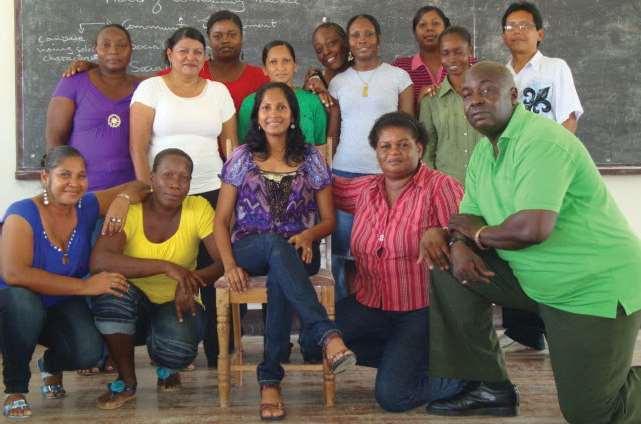
Whereothersmightsee impossibilitiesassetbacks, Dr.Budhramviewsthemas opportunities.Shesharedthat herdrivingforcewassimply accomplishingwhatshewas toldshecouldnotbecauseof theodds.“Themotivationfor metobecomeachampionis whenIwastoldwhatIcould notbe.Ithendecidedthat nonegativitywouldholdme back,andIwouldstriveand


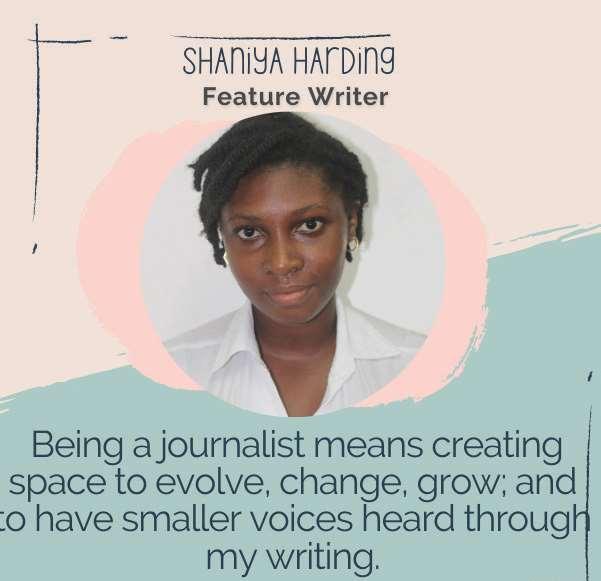
andgirls,especiallythose facingadversities.Drawing inspirationfromherown challenges,Dr.Budhramsees education,inanyfield,asthe firststeptocreatingabetter wayoflife.“Ihaveapassion foryoungpeopletoseethem achieveinlife,andespecially women.Iwantthemtoknow thatwehavethestrength andwecandoimpossible thingsifwejustbelievein ourselves.Andso,Iadvocate foralotofwomen,especially thosewhoareexperiencing manychallengeswhichappeartobeunsurmountable. Ihavehadroughtimes,but Inevergaveup.Istillmade it,”sheshared.




alcareer.
Servingtheunderprivileged Dr.Budhram’sversatilityandgenerosityshine throughherinvolvementin severalmajoreducational institutions.Herprimary professionalresponsibility liesinservingunderprivilegedyouthandfamilies.In fact,sheisaninternational
developwithorwithoutvalidation.Myfamilymembers andmentorscontinuetobe supportiveandIamdeterminedtojourneyforward andhelpothersontheway,” sheasserts.
Empoweringwomen througheducation
The49-year-oldmother offiveisavibrantadvocate fortheeducationofwomen
GivingbacktoGuyana Neveronetoturnher backonherhome,Dr. BudhramfrequentlyreturnstoGuyanaandaspirestoplayalargerrole indevelopingthecountry thatshapedher.“Myfutureendeavouristobean educationalleaderwho caninspireotherpeopleto becomegoodleadersand thuscontributeeffectivelytothedevelopmentof whichevercountrytheyresidein.Specifically,Iwould liketohavetheopportunitytoshareineducational leadershipprogrammesin Guyana.Guyanaisdevelopingrapidlyandwehave toensurethatourcitizens aretrainedinallrelevant areas.Developmentineducationmustberegardedas apriority.Iamwillingand readytoserve,”shesaid.
ByShaniyaHarding.
WHENLeroyHendricks wasjustelevenyearsold, hefacedadecisionthat manychildreninremote areasencounter:whether tostayinhishometownof Lethemorventuretothe capitalcityofGeorgetown toattendschool.Fuelledby enthusiasmandapassion forhigheracademicpursuits,LeroychoseGeorgetown.Thisbravedecision wouldalterthecourseof hislifeandwasjustthe firststepinhismedical career.Leroywouldlater returntoLethem,firstasa teacherandnowasadoctor andartist.Theyoungprofessionalandentrepreneur
swimming,andalltheactivitiesthatGuyanesewould call‘lifeinthecountryside’. “Whenweweretherein Lethem,it’smoreoflikea countrysetting.Wewould reallygettopickfruitsand climbtrees.Wewouldenjoy anopenenvironment.Asa child,wewouldgooutand shootbirds,catchfish.But now,it’snotsomuchlikethat here,”hesaid.
Aftercompletinghisprimaryeducation,Leroywas awardedtheopportunityto attendschoolinGeorgetown onascholarship.Asthefifth ofsevenchildrenandalready anambitiousyoungman, LeroyleftLethembefore hewastwelve.Reminiscing abouttheexperience,Leroy






championsthecelebration ofindigenousheritageina bold,unique,andauthentic way.
Growingupinthered dustofLethemwasexciting, saysLeroy.Althoughsimple, lifeontheoutskirtsoftown wasdrasticallydifferentfrom thatinGeorgetown.Leroy sharedthathischildhood wascharacterisedbycountlessdaysfilledwithfishing,
ingthinghenoticed wastheenvironment; goingfromtheopen vastnessofLethemto theconfinedspaceofa Georgetownapartment washardtoadjustto. Thefoodofhishome wasalsosomething Leroystruggledwith. Asheexplained,“In Lethem,Iwasnotaccustomedtoeatingrice everyday.Iwasused toeatingourtraditional foodsanddrinks.But here,itwasriceevery day.Now,Iactually likerice.That’ssomethingIcan’tdowithout now.”





Afterfinishinghis highschooleducation, Leroybecameateacher,arolehetookon withthewell-beingof hiscommunityatheart. Whileworkingasa teacheratSt.Ignatius, Leroyhadhiseyesset onthemedicalfield, butteachinggavehima chancetogivebackand nurtureyoungminds forthreeyears.Hestatedthattheexperience alsotaughthimalotabout himself:“ItaughtatSt.IgnatiusSecondarySchool forthreeyears.Oneofthe thingsIreallygotfromthat experienceisthefactthat Iwasabletospeakmore.I wasverytimid,veryshy,but Iwasplacedinasituation whereIhadtospeak.”


theircountry,andIdidnot haveanytogiveback.SoI designedmyownandtookit backhome,”hesaid.
Thiswasthebeginning ofabrand.Thebrightcoloursanduniquelyinspiringdesignsgarneredsupportfrompeopleinboth GuyanaandCuba.The collaborativebrandLethemExclusivewasborn. Focusedonbrandingand designing,LethemExclusivehasworkedalongside venturesliketheRupununi Rodeo.LeroyandLethem Exclusiveaimtobringthe truetraditionsofGuyana’s nineindigenoustribesto theforefront.Leroyis proudofhiscountryand evenprouderofhisheritage.Asmoreeffortscontinuetobemadetoreach andcreateopportunities infar-flungIndigenous communitiesnationwide, Leroyishappytohavehad thechanceshedidandisan advocateforstayingtrueto one’sorigins.


shared,“Ihadtomakethe choiceofwhetherIwantto stayinRupununiorcome toGeorgetown.So,Iwas excited.Idecidedtocometo Georgetownbecauseinmy mind,Iwascomingtoacity likeNewYork.”
Leroysoonlearnedthat althoughitwasanewexperience,lifeinthebigcity wasnotallthatitseemed. Thefirstandmostchalleng-
Medicinehadlongbeena passionforLeroyandsomethinghesawasawaytogive backnotjusttohiscommunitybuttohiscountryatlarge. Hestated,“Ialwayswanted todomedicine.ButIdidn’t havethefinancestogoto universityatthetime.So,I appliedforascholarshipto ChinaandtoCuba,andIgot throughwithCuba.”Taking advantageoftheopportunity,Leroypursuedmedicine tobecomeageneralpractitioner.Ashestated,“Inthe seven-yearperiod,thefirst sixmonthsthatyou’rethere, yougottolearnSpanish. You’renotallowedtosay anythinginEnglishatall... Buttheteachersarevery patient.”
Cubawasthebeginning ofanewchapter,butitwas alsothebirthplaceofLeroy’sartisticventure.While studying,hemetpeoplefrom nationsallaroundtheworld, eachpersonshowcasingtheir country’scultureindifferent ways.Leroywantedtodo thesame.“Itstartedbytravellingbackandforth;people wouldbringmeT-shirtsfrom






ByShaniyaHarding
DRStephonHenryhas comealongwayfromhis humblebeginningsina smallcommunityinthe Rupununi.Ageneralpractitionerturnedpsychiatrist, hehailsfromoneofthefew remainingMacusi-speakingvillagesintheregion. Despitethedistanceand decadesthatseparatehim fromhisroots,Dr.Henryproudlyembraceshis heritage,whichremainsa vitalpartofhisidentity. Nowachampionformental healthcareaccessibility,he iscommittedtoensuring thattreatmentreachesnot onlycentralGeorgetown, butalsotheremotecommunitiessuchastheonehe callshome.
Bornandraisedinthe south-centralareaoftheRupununi,ayoungDrHenry wasambitious.Withadrive andpassionforeducation,he tookhiseducationalendeavoursveryseriously,wanting toworkinhealthcarefrom thetimehewasaboy.This driveforexcellencemay havebeengenerationalas well,withafewofhisother siblingsmakingthemoveto studyinGeorgetownbefore
hedid.Recountingthememorablepartsofhischildhood, DrHenrysharedthattraditionalfoodwasabigpartof hishomeandwhoheistoday.“WhereIgrewupisthe onlyMacusi-speakingvillage inSouth-Central.Intermsof ourculture,it’sprettysimilar toothervillages.Evennow, Ican’tdowithoutfarine orcassavabread—ithasto bethereatsomepoint.The Brazilianmusicalsohada lotofinfluenceinmyhouse.” Hesaid.
Afterhissecondaryeducation,DrHenrywassure thathewantedtofollow alongthepathofhealthcare,buthewasnotsure howhewouldgetthere. Thatwasuntilthechance tobecomeadoctorcame along.Ashesaid,itwasan opportunityhejustcould notgiveup.”Ifinished school,andthentheopportunitytobecomeadoctor cameup,andIcouldn’tlet thatslidebecauseitwasone ofmydreamsasakid.Iappliedandgotthroughtogo toCuba.Ispentsevenyears thereandgraduatedasa generaldoctorin2013,”he stated.
DrHenryworkedasa generalpractitionerfora
year,movingthroughvarious hospitalsandclinicsaround thecountry.Althoughagreat experience,hesoughttohave aspecialityandwantedto moveintoafieldthatwould allowhimtohelppeople uniquely.Hewantedtochampiontheimportanceofthe often-overlookedandstigmatisedissueofmentalhealth. Initially,hegainedsome pushbackaboutchoosing psychiatry,buthepersevered regardlessandsoongained hisMaster’sinthefieldhe wassopassionateabout. “Afterworkingforayear anddoingvariousrotations, IdecidedIcouldn’tbeageneraldoctorforlong.Ichose psychiatry.Alotofpeople toldmeIshouldn’tdoit,but IfeltitwassomethingIcould makeadifferencein.IstartedtheMaster’sinPsychiatryprogrammein2016and passedin2019.Sincethen, I’vebeenworkingwiththe TPSU,doingsatelliteclinics alloverGuyana,”hesaid.
But,DrHenry’sjourney tosuccesswasmarkedby quiteafewchallenges.One ofthesehasbeentackling theconstantmisconception thatisbeingthrownathim asayoungIndigenousdoctor. AchampionforIndigenous




peopleinhisownright,Dr Henryisdispellinganddisprovingharmfulstereotypes. Theonlywayheknowshow isbybeinglivingproofofthe successofhispeople.“One ofthethingsIgrewupwith isthatpeoplethinkweare fromthebush.Butwehave Indigenouslawyers,doctors, nurses,andpolicemen.We areeverywherenow.Itshows thatifwearegiventheopportunity,wecanmakeitfar. Andwearemakingitfar,” hesaid.
DrHenryhasmadeit sofarthatheoftenreturns tohiscommunity.Looking atthehealthcareaspectof Guyanesecommunities,Dr
Henrysharesthatthereare manymentalhealthchallengespresentincommunities nationwide,notjustinthe populated,well-knownareas. “Therearealotofmental healthissuesinthecommunity—depression,anxiety, psychoticillnesses.Noteveryonewithamentalhealth illnessiscrazy.Ifyoucome toseekhelpforamentalillness,itdoesn’tmeanyou’re crazy.WeattheTPSUare alwayswillingtohelp,and weencouragepeopletoreach outforassistance.”Hesaid. AsGuyanacelebratedyetanotherIndigenous HeritageMonth,DrHenry seesthismonthasasig-
nificantstepinconnecting culturesandanopportunitytodomorethanjust observe.Butitisachance forGuyanesetosupport andlearnfromeachother andgainjustalittlebit moreappreciationforone another.“Thismonthis veryimportant.It’satime tobringeverybodytogether andshowcaseourtalents andculture.Weshareit withourfellowGuyaneseso theycanlearntoappreciate itmore.That’swhatthis monthisabout—celebratingandappreciatingour heritage,”saidDrHenry.
ByShaniyaHarding
INtheRupununi,atthe veryheartofGuyana’suntouchedbiodiversity,anincredibleteamofindigenous menandwomenisdoing morethanconservation. TheSouthRupununiConservationSociety(SRCS) isoneofGuyana’smost inspiringconservationefforts,aimedatworking withvillagesintheRupununitokeepthewildlife intactforgenerationsto come.Bycollaboratingwith thepeopleoftheRupununi, theSRCSisusingaunique approachwhichseestraditionalknowledgeand scientificresearchcombine toprotecttheendangered speciesoftheRupununi.
conservation.Byofficially registeringasaFriendlySocietyin2003,theyaimedto fostercommunity-ledconservationefforts,empowering localpeopletotakecharge ofprotectingtheirnatural resourcesandaddressingthe challengestheyfaced.This community-drivenmodelhas beencentraltotheSRCS’s missionandeffectiveness.”
Thecommunitystillplays anintegralroleintheventure today,withevenmorecommunitiesandlocalsgetting involved.Theideabehindthe societyissimple,saysKayla: sustainableconservationby creatingsystemsthatwould continuetogarnersupport. Asshestated,“Theimpact theSRCSwishestoseeis, firstoff,thelong-termsus-
TheSouthRupununiConservationSociety (SRCS)leadanimpactfulprogrammeinSand CreekvillagefocusedonprotectingtheYellow SpottedRiverTurtle(Source:TheSouthRupununiConservationSocietySRCS,Facebook)
KayladeFreitas,ProgrammeManagerofthe SRCS,spoketothePepperpotMagazineaboutthe establishmentofthesociety, whichhasitsbeginningsgoingasfarbackasthe1990s. Theinitiativebeganatthe communitylevelwhenthe peopleoftheRupununinoticedadeclineinthethriving ecosystemsintheirhome.As shestated,“Ascommunity membersnoticedthedecline ofwildlifeandotherchanges impactingtheirwayoflife, theyrecognisedtheneed foragrassrootsapproachto
tainabilityofbiodiversity andecosystemsintheSouth Rupununi.Wewouldliketo havestrengthenedcommunityresiliencetoenvironmentalchallengesandclimate change,andempowerment andownershipofconservationinitiativesamongIndigenouscommunitiesandother localpeoplesintheregion.”
Oneofthethingsthat standsoutabouttheSRCS isthefactthatitissomethingdonefortheRupununi, bytheRupununi,having some150registeredmembersandreachinghundreds
moreacross12communities. Themajorityofitsmembers,executives,andstaff areIndigenousthemselves, andmostoftheprojectsare spearheadedbythepeopleof theRupununi.Kaylashared thateachprojectisacollaborativeeffortinvolvingvillagers,communityleaders,local governingbodies,andthe occasionalotherconservation society.“Communitiesthemselvesaremembersofthe SRCS,buttheexecutivealso activelyengagescommunitiesinalldecision-making processesandalwaysincorporatestraditionalandlocal knowledgeintotheconservationstrategies,”shesaid. “TheSRCSbelievesthat asIndigenouspeoplesrely directlyontheenvironment, thepeoplewholiveinthese landsshouldhavetheright toinitiateprojectsthatalign withtheirbiggerenvironmentalmanagementgoals.”
Thevastsavannahsofthe Rupununiarehometosome ofGuyana’srarestanimal species,someofwhichare uniquetoGuyana.Theseare whatKaylasaystheSRCSis workingtokeepsafe.“Our flagshipspecies,thebird thatwehavefocusedonfor over20years,istheendangeredRedSiskin.Wearealso workingonsettingupprotectionsfortheRioBrancoAntbirdandtheHoary-throated Spinetail–whicharetwo criticallyendangeredbirds. Wealsohaveactiveprogrammesfocusedonanteaters,armadillos,yellow-spottedriverturtles,andrabbits,” shesaid.
AccordingtoKayla,the
Rupununiandtherestof Guyanaarehometoawide arrayofundiscoveredand endangeredanimals.The SRCShopestoextendtheir reachtomorecommunities andpeople.Inthemeantime, however,theyhavemade massivestridesinprotect-
thisbird.Througheducation andawareness,community engagement,lobbyingfor legalprotection,andtourism interestinthebird,communitieswereabletoseethevalue ofconservation.Itwasnot easy,butthelong-term,community-led,andconsistent
howconservation,education, research,andlivelihoodscan belinked.”
TheSRCShasfaced somechallengesintheirambitiousendeavours,withthe biggestbeingfundingandresources.AsKaylashared,“A lotoffundingcomesthrough grantcycles,andwedonot haveconsistentsupportfor ourcoreadministration. Manydedicatedindividuals volunteertheirtimeandenergy,drivenbytheirpassionfor theircommunities,wildlife, andtheenvironment,butthey alsohavepersonalneedsto address.Retaininghuman resourcesbecomesdifficult astheybalancetheseresponsibilities.”
ingandpromotingtheRed Siskin,ararespeciesthat wasbroughtbackfromnear extinctionbytheteamat theSRCS.“I’dsaythatthe RedSiskinprogrammehas beenverysuccessful–here wasasmall,fierybirdon thebrinkofextinction,and herewasasmallgroupof friendswhochosetoprotect
approachhelped.Itiseasyto defineitasasuccessnow,but itwasalongroadwithalot ofpassionandloveforcommunityandtheenvironment, alotofvolunteering,anda lotofunderstanding.”She furtheraddedthat,“Success isdifficulttodefine,butwe remaincommittedtoaholisticapproachthattriestoshow
Itcouldbeeasyforpeopletomissthesubtlechanges intheirenvironmentand underestimatetheimportance ofconservationefforts.This significanceisalsosomethingtheSRCSisworking toeducatepeopleon,lobbyingforthemessagethatour ecosystemshaveabigpart toplayforeveryone.“Itcan beastruggletohelpothers recognisethevalueofconservationwhentheyarefocused onsurvival.It’scrucialto demonstratethatourfates areinterconnected,particularlyinthecontextofclimate change.Whilelocalefforts canbemade,thebroader systemicissues—suchas pollution,deforestation,and environmentalchanges— seemoverwhelming.After
ByShaniyaHarding
ARTinanywayorform canbeameansofexpression,aformofstorytelling,orawayforsome peopletoshareapartof whotheyare.However, forindigenouswriterand artistCosmataLindie,art issimplyapartofwhoshe is.TheKwakwani-born fictionwriterhasbeenrecognisedinternationallyfor heruniqueliteraryflair. Herworkhasbeenpraised foritsimmersivestylethat incorporateselementsof lifeinGuyanaaswellas hertraditionalandculturalidentity.Cosmatasays thatmuchofherworkthat isseenastraditionalwas notintentionalbutrather, liketherestofherwork, simplyanextensionand expressionofwhosheis.
time.Butitwasstillagood childhood,”shesaid.
Althoughsimplistic, Cosmata’schildhoodwas thebirthplaceofhertalentandwhereshewould latergarnerinspiration forsomeofherbestwork. Herartisticventuresbegan withvisualart,whichinitiallystartedasahobby,a simplepieceshedidinher youth.“Ihavealwaysdone art.SinceIwasyoung, art,drawing,andpainting arethingsthatIlike,”she stated.
amongthehighlightsof theexhibition.“Taking Flight,”whichcapturesa seeminglyuniquelyGuyanesesight,featurestwo cranesbesidearapidriver inGuyana,while“KaieteurFalls”portraysoneof thenation’smostmajestic sightsthroughtheeyesof acreativeGuyanese.

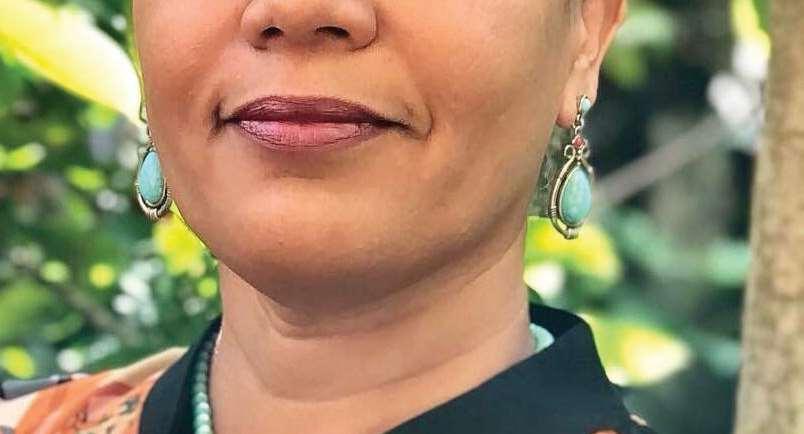

Therearefewplaces thatofferanupbringingas uniqueasoneintheheartof theBerbiceRiver.Lifeinthe riverinecommunitypresentedquiteafewchallenges. Withoutroads,Cosmata andherpeerstraversedthe areabyboat.“Growingup intheriverwasabitmore rural,Iwouldsay.Wedid nothaveroads,soweused boatstomovemostofthe
Cosmata’sartcontinuedtoblossomasshegrew older,eventuallymaking themovetoNewAmsterdaminBerbice.Visualart stillfascinatedher,andshe continuedtopaint,although shepursuedotherventures. “Somethingaboutvisualart hasalwayscaptivatedme, andIthinkit’ssomething Iwasbornwith,”shesaid. Herstepintowritingcame muchlaterwhenshebegan withshortstoriesin2010. Cosmatadescribesherwritingas‘secularfiction’-a uniqueblendofthemysticalandmagicalstoriesthat captivatedherasachild andtheincrediblybeautiful surroundingsshegrewupin. Sincebeginningherwrit-
Herpiece‘TakingFlight.’Thatwasfeaturedin 2024’sAmerindianHeritageMonthArtExhibition
ingpathin2010,Cosmatahasgainedrecognition fromvariousinstitutionsand peoplearoundGuyanaand theCaribbeanforheroneof-a-kindwritingstylethat connectswithpeopleacross theboard.
Asapainter,herrecreationofGuyana’sbreathtakingscenerieshasmade heramemberoftheGuyanaWomenArtistsAssociation(GWAA)and theBerbiceArt&Craft Collective(BACC).She hasalsoparticipatedin severalartexhibitionsin Guyana.InMarch2023, sheexhibitedherworkin Paramaribo,Suriname,as partofajointGuyanaand Surinameartexhibitionto markthelaunchingofthe thirdeditionofthebi-nationalmagazineInside Guianame.
Herphenomenalwriting hasalsogainedtraction, withherbeinglonglistedin 2022fortheBrooklynCa-
ribbeanLiteraryFestival’s ElizabethNunezAwardfor writersresidingintheCaribbeanandshortlistedforthe 2023CommonwealthShort StoryPrize.Hershortfictionwasfeaturedlocallyin theSundayStabroek(“The Birds”-2019and“Crossroads”-2020).
Cosmatahasbeenpublishedinternationallyin adda(“WheretheWinds Blow”-July2023)and Doek!(“TheDeer’sTale” -December2023).Shealso contributedtoaCaribbean folklore-themedcollection ofshortstoriesbeingpublishedbytheTrinidadand Tobago-basedCaribbean BooksFoundation,which isduetobereleasedinthe latterpartof2024.
Hermostrecentendeavourhasbeenhercontributiontothisyear’sAmerindianHeritageMonth ArtExhibition.Hertwo pieces,“TakingFlight” and“KaieteurFalls,”are
Ineverywordofher writingandeverystrokeof herbrush,Cosmatamanagestobringthebeautyof GuyanaandGuyaneseto theveryforefront.Herindigenouscultureisoftena constantunderlyingtheme aswell.Alotofherwork haswhatmanyhavecalled culturalundertones,with mostfeaturingpeopleand placeswithinthedeeper, moreremotepartsofGuyanafarfromthecapital city.Thisisnotaconscious decision,saysCosmata. AlthoughaproudIndigenouswoman,shesaysthat herworkissimplyhowshe seestheworldandwhat sheconsidersbeautiful. “Peoplehaveaskedme abouttheculturaland traditionalthemesinmy paintingsandart,andto tellyouthetruth,itisnota consciousdecision.It’sjust whoIam.”Herculture, shesays,isjustapartof whosheis.
THEideaofone’sidentityiscomplexandmulti-faceted. Everypersonhasanidentity,eventhoughtheymayoccasionallystruggletodefineit.Althoughself-identityis somethingthatisinaperpetualprocessofevolutionfor everyone,youngpeoplemayfinditespeciallystrangeto realisethatwearenotthesamepeoplewewereafew yearsago.Thepermanentchangesthatoccurtoour emotionalandmentalstatecanbecomeoverwhelming ifwearenotopentoacceptingthem.Wecaneasilybecometrappedinaspacebetweenthepastandthefuture versionsofourselves.
Perhapsphysicalchangemaybealittleeasiertoaccept andunderstandthanmentalchangebecauseitistangibleand visible.Physicalchangemaymeanthatwenolongerfitinto thesameclothesthatweusedtowearwhenwewereyounger.Mentalchange,however,maymeanthatwenolonger wanttowearthesamekindofclothesthatweusedtolike whenwewerechildren.Thischangeisalittledifficult,simplybecauseitissaddeningtoletgoofthethingsweusedto love.Itmaybealittleeasiertoundergoself-transformation ifwearewillingtorememberthatchangeisnotjustabout lettinggoofthethingsweloveaboutourselves.Itismore aboutmakingroomforthenewpartsofourselvesthatcan helpusbebetterpeople.
So,thereisnothingtofearwhenexperiencingchange withinourselves.Infact,didyouknowthatevenstars
evolve?Starsstartoffasnothingmorethanclustersofgases anddust.Eventually,whenmetwithspecificconditions, theseclustersofmattertransformintostars.
Then,evenwhentheyhavefullyevolvedintostars, theycontinuetochangeveryslowlyasaresultoflosing energy.Whentheyhavelostsufficientenergy,starsreach theirfinalstate,whichmayvarydependingontheirmass. Oursunisanexampleofastarthatisgraduallylosing energyuntilitreachesitsfinalstate.Ofcourse,thiswill onlyoccurbillionsofyearsfromnow,butitisinteresting tothinkthatevensomethingaspowerfulasoursuncannot escapechange.
Aswegrowup,wewilldiscoverthatchangenotonly affectsourlikesanddislikes,butitmayalsoaffectthe relationshipsweform.Sometimes,wecangrowapart fromthefriendswehavehadthroughoutourentirelives. Thisdoesnotmeanthatwestoplovingthem,butitmay meanthatourlivesmayhavebeguntotakedifferent coursesfromeachother.Wemightstopspendingasmuch timewitheachotherandinsteadgravitatetowardsother groupsofpeople.Inmomentssuchasthose,weneed tounderstandthat,justlikeus,ourrelationshipscan changewithoutbreakingordisappearing.
Finally,changealsomeansthatourgoalscanbecome different.Thismaybethemostdifficultpartofitall.There
areveryfewgoalsanddreamsthatsurvivethetransition fromchildhoodtoadulthood.Thismaybethereasonwhy manyyoungpeopleareonlyabletodecideonaspecific careerduringthelatterpartoftheirteenageyears.Evenso, theymaychoosedifferentpathslateronintheirlives.Itis allrighttoexperienceaperiodwhenourmostfundamental goalsarechangingintosomethingdifferent.Itisalsoalrighttoexperienceabriefperiodwherewedonotknow whatwewantatall!Afterall,acaterpillaronlybecomes abutterflyafteritexperiencesaperiodofinactivitywithin itscocoon.
Ourself-identitiesarecarefullyanddeliberatelyconstructedbythememorieswemakeandtheexperiences wehaveovertheyears.Somepartsofusarecompletely replacedwhenwegothroughnewthingsinlife.Onthe otherhand,somepartsofusonlytransformslightlyto accommodatenewperspectivesthatwegain.Throughout thisentireprocess,therearedayswhenwemaygoto sleepfeelingconfusedaboutwhowetrulyare.During dayssuchasthose,weonlyneedtolookupatthestars intheskytoremindourselvesthatchangeisnormal, andifwearewillingtoacceptit,thenwetoomayglow asbrightlyasthestarsdo.

IWASN’Tbroughtupinthe ageofTV.Thoughmygenerationknewthattelevision existed,wewereloyaltothe cinemasandthemanybookstandsandbookstores,so,we didn’tcomplain.
Iwasabout13-pluswhenI wasgiventhefirstbookformy personallibrary.Itwasabook withoutpictures.Myfriends andIpreferredbookswith sketchesorwithcolouredartworksuchasTreasureIsland, whichIlearnedtwogenerationslaterthattheartworkwas donebytheAmericanartist N.C.Wyeth.
Now,tothatfirstbookthat Iwasgiven,‘Aesop’sTales’: Ilovedthestories,especially becauseIwastoldabouthim, thathewasalsocalledEsop, beingthesameasEthiopian inhisera.ThetalesofEsop weregroundedinphilosophicalawarenessthatwould enableustoadjusttothe truenatureofhumanityclose andafar.Thenextbookwas giventomebyarelativewho insistedthatthisbookwould teachmealottheworldof myearly20swaslosing.That wasabig,gloomyprediction then,buttoday,heismoreontheball.Thatbook,“Man TheBridgeBetweenTwoWorlds,’’ifIhadnotreadEsop orAesop,understandingthelattercontentwouldnothave beenthataccessible.
Whatwe’relosingisthesymboliclanguageoffolk storytimeand,worse,theawarenessofpersonaldecisionsbasedonpriorknowledgeandthecapacityto analysegoodagainstwrong,further.Areligiousexample illustratesthatmoralitywasamatterofobedienceratherthanamoralindividualchoice.Itneveroccurredto Abrahamthatthesacrificeofhisownson,demandedby Yahweh,couldbeimmoral.Theremarkablefactwasthat theBiblehadnothingbutpraiseforAbraham’sreadiness tobringahumansacrifice.Wasthiscommonpracticein
adifferentage?‘Paraphrasedwithoutdisruptingcontent, ‘MantheBridge...’Whyisthereaneedtoquestionthe disseminationofcoreawarenesswithrespecttobalancing religiousorspiritualbeliefswithinthecontextofprofoundmoralideals?Thewhenandwhy“Thereisatime foreverything.”Weareacountrywithtoomanyviolent, fatalhumanincidentsimpactingyoungcitizenswithouta murmurthatrecognises,defines,orcaninspire.
InEsop’sFables,thenarrativesaremoredirect.Ibought anotherissueofthisbooksomeyearsagoformylastchild.I toldherwhoEsopwasbecausethiseditionwascompletely Europeanised.Page5carriedthestoryoftheWolfAndThe Lamb.Thehungrywolfcameuponthelambbythestream andbeganallsortsofaccusationstowardsthelamb,towhich thelambrespondedrespectfully,provingthewolfwrong,but whenthelambleastexpected,thewolfseizedthelamb,slew
itanddevouredit.Themoralofthatstoryisthatthewicked willalwaysfindatwistedreasontocommitwrongdoing. Whatwecanextractfromtheprocessofexperienceis thatchildhoodreadings,thoseofuswhohavebenefited fromit,haveendeavouredustounderstandbettertheactions beforeusand,attimes,therehearseddeceptionsproposed, whichcanhelptoceasethementaltensionsofpromisesby personstrusted.
Ourchildrenmustneverbetheill-fatedlambthatis confusedbytheemptyaccusationsofthewolf,who,inthe end,devoursthenaïvelamb.Getthemreading,dowhat Ididinmyearlyworkingyears:visitthesecond-hand bookstandsandpurchaserelevantbooks.Theywouldn’t learneverythingonaphone.Getthemaccustomedto reading.
all,howcanyoutellthesunnot toshinesobrightly?Climate changeisacomplexchallenge thatcannotbeeasilytackledat thelocallevel.”
ThecountlessprojectsputforwardbytheSRCSarenot random;thesein-depthanddiverseeffortsarebasedonscientificstudiesandresearch.Thisiswherethepeopleofthe Rupununiplayasignificantrole,withtheirknowledgeand understandingofthecommunitybeingvitaltoresearchers.As Kaylaexplained,“Manyofourconservationstrategiesbegin withresearchthatblendsscientificmethodswithtraditional knowledge.Whilescientificdataprovidesvaluablemetrics, localinsightsofferadeeperunderstandingofthecontextand nuancesoftheenvironment.Eachofourprojectsincorporates bothscientificresearchandtraditionalmethodologies,ensuringaholisticapproachtoconservation.Thiscombination enrichesoureffortsandleadstomoreeffectiveandculturally relevantoutcomes.”
MeasuringthetrueimpactoftheSRCSisquitechallenging,asmanyoftheoutcomeswillonlybecomeevident overtime.Atthisstage,keyindicatorsofprogressinclude communityinterest,activesupport,andengagement alongsidelong-termgoalssuchasincreasingspeciespopulationsorreducinghabitatdestruction.Asarelatively youngorganisation,theteamisintheprocessofestablishingsystems,after20yearsofgroundwork,toeffectively monitorandmeasuretheseimpactsinthefuture.Moving forward,KaylasaystheSRCShopestogrowwiththeir corevaluesatheart.“Wecurrentlyhaveadiversefocus withfourmainareas:communitylivelihoods,research andconservation,educationandawareness,andcultural heritage.Eachoftheseareashasactiveprogrammes,and
theyarecloselyinterrelated,workingtogethertosupport ouroverallmission.Aswemoveforwardwithour10-
yearstrategy,weaimtodeveloptheseareasfurtherwhile ensuringourgrowthremainsmanageable,allowingusto
TheSouthRupununiConservationSocietywasawardedaWhitleyAwardbytheWhitleyFundfor NatureforoureffortstopreservetheRedSiskininGuyana.LeroyIgnacio(farleft)wasthefirst GuyanesewinnerofthegloballyprestigiousWhitleyAward(Source:TheSouthRupununiConservationSocietySRCS,Facebook)




Thesunset--acollusion ofbrilliant,richcolours,a backdroptostatelycoconut palmsandasmooth,flowing,black-watercreekin theconversancybacklands.
Astunningtropicalscene!
Vahinsatinthe anchoredengine boatinthemiddleof theexpansivecreek, camerainhand,captivatedbythebeautifulscene.
Inthequietness ofdusk,withonly thesoftsoundsof thewindandthe emergingnocturnal animals,hefeltas thoughhehadfound hisownlittleworld.
Theuntouchednaturalexhibitsofhis surroundingsastoundedhim,forhe hadlivedalmostall ofhislifeinEurope, awayfromsuchraw beauty.
cameraintheprocess.
Heattemptedtofollow theottersinthehopethatthe girlwasclose,buttheyhad alsodisappeared.

Shesurfacedslowly,her headbarelyabovewater,behindahuge, fallencoconutpalm asshewatchedhim leave.









Sinceleavingasa youngboy,histravelshadtakenhimto severaldifferentcountries, butneveroncebackhome.
AllheknewofthetropicalSouthAmericancountrywerestoriestoldbyhis grandfather,storiesofcolonialruleundertheBritish whenhisgrandfatherwasa youngboy:ofsugarplantationsandofpineappleand citrusfarms.
Therewasalwaysa yearningintheoldman’s voicewheneverhespoke ofhishomeland,andVahin alwayslistenedwithinterest.
“Iwillvisitoneday,” hehadtoldhim,notsureat thetimethathewould,but ithadbroughtacomforting smiletohisageingrelative. Itcameasagreatsurprise toVahinwhentheoldman passedandlefthimoneof thefamilyhomesandsome acresofland.
“WhatwouldIdowith that?”hethoughttohimself, “Mylife,myfutureisin Europe.”
Thepainoflosinghis grandfatherwasgreat,and timedidlittletoalleviateit. Therewasstillanemptiness inhisheartmonthsafterthe funeral,whichpromptedVahintoreturnhome.
Hehadplannedhisvisit tohisbirthhomewithdoubt inhismind,wonderingifit wouldbeworthyofhistime, whetherhecouldrelivehis grandfather’sadventures, orwhetherthingsweretoo different.
“Whoisthishandsomestranger?Whyis hehere?”
Shewasasimplefarmgirl,andthe blackwatercreekwith theaquaticanimals washerplayground.
Inhisroomthat night,Vahincouldnot sleep;thevisionofthe girlwasimprintedon hismind,buthequestionedhimself,“Was shereal”?

Now,ashesattherein theboat,intheembraceof beautifulnature,heunderstoodhisgrandfather’sdeep loveforthisplace.
Hesmiledandsaid, “Blessyourdearoldheart, Grandpa,youhavegiftedme somethingofheaven”.
Vahinwasabouttoput downhiscameraastheshadowsofduskdescended.He heardthedistantbarkingof ottersandsawthemonthe horizoncominghisway.
“Thisisamazing!”he exclaimed,capturingthem oncamera.
Thensomethingsounexpectedhappened,itstunned him!
Intheotters’midst,like anillusion,agirlemerged frombelow,longblackhair cascadingdownhershoulderswithwaterglisteningon hersmooth,darkskin.
Foronemesmerisingmoment,hesawsomethingof purebeauty,butasquickly assheappeared,shedisappeared.
“Whatthe---”heexclaimed,scramblingfor words,almostdroppinghis
Hisgrandfather hadtoldhimthatin thewild,thereareuntoldrichesandthatif hehadeverfounda “flowerofthewild”, heneededtokeepitin hislifeforever.
“Whatdidheevenmean bythat?”Vahinwondered, “Whatflowerinthewild?”
ThefamilyhouseVahin inheritedoverlookedthe creekwithaninletrunning behind,enroutetothecitrus andpineapplefarms.The foreststoodononesideasa silentguardian,andthecaretaker’shouseontheother.It hadbeenaguesthouseincolonialtimes.Hisgrandfather, anastutebusinessman,had boughtthepropertywhenit wentonthemarket.
Vahinlookedatthehouse andpondered,“It’sanimportantpartofhistory.MaybeIcanrestoreitasavacationhome.”
Hestayedthatnightat thehousetogetthefeelofa placeheneverlivedin,one thathenowowned.
Thecaretakerandhis wife,anIndigenouscouple, madesurehewascomfortable.
Thenextmorning,sitting ontheveranda,sippingacup ofherbaltea,andwatching thesunrise,hethought:“The peacefulnessandnatural beautyofthisplaceispriceless.”
Hourslater,hewas
draggedawayfromhis thoughtsofbalancinghislife betweenEuropeandGuyana bythesoundofaloudsplash inthecreek.Hestoodupin aflashandlookedacrossthe waterbutwasdisappointedto seeyoungboysplaying.He exhaledslowly,disappointed thatitwasnotthemystery girl.
Forthenextfewdays, hetravelledacrossthecreek fromthehousetothemainlandashebeganformulating restorationplans,butnot oncedidheseethegirlagain. Hewasbeginningtothink thatmaybeshehadbeenan illusion,andjusttobesure ofthat,heanchoredhisboat onceagaininthecreekand waitedforthesunset.The
crimsonglowseemedto glitteracrossthewater,and fromadistance,hesawthe otterscoming,butshewas notwiththem.
Heshookhisheadsilently,deeplydisappointed.Heturnedtostartthe engine,andhishandfroze ashesawhersittingona sandbank,lookingathim. Theworldstoppedfor himatthatmomentashe lookedather.
Wassheoneoftheriches ofthewildhisgrandfather hadspokenabout?
Hestartedtheengineand turnedtheboat,wantingto talktoher,hopingshewould notswimawayanddisappearagain.Astheboatdrew closer,shestooduponthe
bank,poisedtoplungeinto thewater.
“Wait!”hecalledoutto her,“Ijustwanttotalkto you.”
Shestoppedandturned, andwhenhewasclose enoughtotalktoher,hesaid, “Iamnewhere,don’tquite knowanyone,andIwould reallylikeforyoutobemy friend.”
Shelookedathimfora longmoment,andthenshe smiledalittlewithaslight nodofherhead.
Hesmiled,happyforthis smallstart,forhehadfound somethinguniquethathe knewhewouldneverwant toletgo.
Hisflowerinthewild.


INallcountriesofthewesternworld,especiallyinthe cities,therearealwaysa numberofhomelesspeople,butthecausesdiffer fromcountrytocountry andfromeratoera.In Guyana,thefirstappearanceofthehomelesscame afterEmancipationofthe plantationslaves.Manyof thefreedmenweretooweak orsicktocontinueworking, andsomefoundthemselves inGeorgetownandNew Amsterdam.However,the vastmajorityofsuchhomelesspeopleremainedinthe villageswherethevillagers, thoughtheywerepoor,extendedhelptothem.With theeffluxionoftime,these, asagroup,diedoff.
Theslaveswerereplaced byindenturedlabourers,with smallnumberscomingfrom MadeiraandChina,butwith thevastandoverwhelming majoritycomingfromIndia. Theselabourerswerecontractedtoworkforfiveyears withareturnpassage,which wasveryoftennothonoured, buttheywereofferedarenewaloftheircontractsfor anotherfiveyears,which theywereforcedtotakesince therewerenoalternatives. Attheendoftheirindentureship,whentheirhealthhad deterioratedandtheycould notwork,hadnomoneyor relativesandcouldnotface theharassmentofathreemonthseavoyagetoIndia, anumberoftheseIndian workerswhohadbecome uselessontheplantations driftedtoGeorgetownand NewAmsterdamwherethey formedahomelessgroup tryingtoekeoutalivingas “jobbers,”fetchinggoods forshopsorindividuals. Atthistimeanduptothe 1960stherewerefewcars, andtransportingofgoods wasdonebyanimal-drawn cartsorby“jobbers.”These homelesspeopleslepton thepavementsofdowntown Georgetown,AmericaStreet andaroundtheGeneralPost Office,whicharepopular locations.Fordecadesbeforeandaftertheending ofIndenturein1917,the stereotypeofhomelesspersonsweretheseweakand
decrepitIndianex-sugarestateworkers.Theemphatic term“homelesspersons” isofcomparativelyrecent usage,andthesepersons werecontemptuouslytermed “villains”or“jobbers.”
Thecolonialstatewas awareoftheproblemsof agedanddecrepithomeless personsandtheAlmsHouse, laterknownasthePalms, wasprovidedinthelastquarterofthe19thcentury.The CatholicChurchalsoprovidedsomeaccommodationand therewereafewothersuch “homes,”suchasUncleEddy’s,largelyfinancedbythe Freemasons.Thesevarious homescateredfortheaged, thedecrepit,andthosewho mayhavelostalimb,allof whomarefrommiddleand lower-middle-classbackgrounds.Thelower-class ”jobbers”andotherhomeless Indiansugarestateworkers wereneverconsideredfor admissiontothese“homes.”
Thefirsttimeanyeffort wasmadetohelpthelowest classofpeopleofevery raceandreligionwhowere alwayshungryandwithout shelterwasmadebyPandit RamsaroopMaraj.Pandit Ramsaroopwasbornin Wakenaamand,fromhis earliestyears,empathised withhumanpainandsufferingandusedhissmall resourcestohelpthepoor. Heconceivedtheideaof buildingahomeforthe poor,andsincehehadno personalwealthandno wealthydonorsandeven thestatewasnotwillingto makeanycontributionsto hisphilanthropicdream, hebecameawandering mendicantcollectingtiny donationsashewalked overthecountry.Hewas mockedandinsulted,and ononerecordedoccasion, whenhewaspeltedwith smallstones,hepicked themupandthankedhis tormentors,tellingthem hewouldusethesestones tohelpbuildahomefor thepoor.
Intime--justovera100 yearsago--theDharmshala wasopenedwiththeGovernorandtheotherdignitaries payinghomagetoPandit
Ramsaroop’sself-sacrifice andvision.Atpresent,the homeisbeingadministered byPanditRamsaroop’ssurvivingdaughters,andthe premisesarekeptspotlessly clean.Theinmateshavethree mealsperdayandregular medicalcheckups.Primarily asatherapy,someable-bodiedinmatesarepermittedto work.
Despitetheexistenceof thesehomes’charitabledonationsandthewidespread personalhelpgiventoindividuals,therearestillhundredswhosleeproughon thepavementsofdowntown Georgetown.Thestatehas beenestablishingsheltersto offertemporaryrelieftothe homeless.Theseshelters needtoevolveintopermanenthomesequippedwith modernfacilitiesandstaffed byprofessionals.Inthis era,thereasonswhypersonsbecomehomelessare differentfromthepastwhen abjectpovertywasthemain reason.Today,itcouldbe theinabilitytomeetrental obligationsfortheirhomes orlosingone’sjobandbeing leftpenniless,oritcouldbe theresultofspousalorother domesticdiscord,oritcould beteenagersandevensmallerchildrenbeingsounhappy athomethattheyaredriven toleavetheirhomes,orthere isAlzheimerDiseasewherebythevictimloseshismemory,andthereareaplethoraofotherreasons.These modernshelters,severalof whichwouldbeestablished inGeorgetown,NewAmsterdamandelsewhere,must bepreparedandequippedto playarehabilitatoryrole.
Incertain“localgovernmentjurisdictions”in NorthAmerica,homeless personsareregardedas nuisancesdefilingthecity’s landscapeandshouldbe removedtoremoteareas andhomelesspersonsare criminalised.InGuyana, homelesspersonsshould alwaysbetreatedhumanely,shouldneverbeignored andshouldbehelpedto returntobeingusefulmembersofsociety.




MYlastcolumn,“Arewe actuallysettling?”hadme thinking;asmanyofus settle,thereareanequal numberwhodon’t.That, unfortunately,meansthat thosewhofeeltheyweren’t fearlessenoughnottosettle havesomefeelingstowards peoplewhodidn’t.Itbegsa specificquestion-Ifweare settling,areweprojectingon thosewhoaren’t?
Projectionispowerful ineverydaylife:weproject ourdreamsintogoals,our thoughtsintoemotions, andourexperiencesinto stories,andthisinfluences otherpeople.Weprojectourownfilteredperspectiveontootherpeople. However,thereisaless heartwarmingside:wealso projecthowwefeelabout ourselves,usuallynegatively,ontoothersandthen thinkandbehaveasifit’s actuallyfact.Animportant questionfollows:arethese filtersprovidingaclearor distortedviewofyourself andothers?
Whenweproject,we displaceourownfeelings ontosomeoneelsedueto ourowninsecurities,unhappiness,discomfort,or envy.CommonexamplesI seealmostdailyarepeople whocriticiseotherpeople abouttheirappearance
becausetheyfeelinsecure intheirownskins,orinsult singlepeoplebecausethey areinarelationshipthat theyaren’thappyinand can’tseemtoleave.
Projectionisn’tanew worldideaofpeoplebecomingtoosensitive;SigmundFreudfirstspoke ofitin1895anditsinconveniencestobothparties --andboy,didweperfect it!Hedescribedapatient whofeltsomeinternal shamebasedonactions shehadtaken,soshewas convincedherneighbours weregossipingabouther andwere,therefore,bad people.Ifeelasifsomeof usaregoingtorelateto thatonehard.
Likemostthingsinthe mentalhealthstratosphere, itcanbeconsciousorunconscious,butIdebatethat itisamoreunconscious defencemechanismtoobserveourworstthoughts andfeelingsfroma‘safe’ distance.However,with someself-reflection,they canallsurfaceattheconsciouslevel,whichallows forchange.
Formyavidreaders, youknowIbelievethe funalwaysbeginswiththe Whys.
Projectingistypical-
lydonesimplybecause theprojectorhasdifficult,unresolvedfeelings thatbecomeeasiertodeal withwhencastontosomeoneelse.Itconservestheir self-positiveimagerather thanconfrontingnegative traits--thefeelingsareaddressedandevenmanaged, butjustinawaywherewe don’tneedtorecogniseit inourselves.Itcanalsobe usedasacontroltactic,as projectingmakesthings morepredictable.There islittlefearoftheknown, butwherethereisfear thatneedsreducing,there istypicallyasearchfor evidencearoundusthat willconfirmordenythese feelings.Itisaninternal battleandonethatIconstantlyreassurethepeople whoarebeingprojectedon isnottheirfault.Evenif someonedecidesthattheir ownprojectedviewsare true,itstilldoesnotmake itreality.
Projectingcanbe ‘good’and‘bad,’butinmy opinion,bothhaveproblematicoutcomes.Abad outcomelookslikewhen apartnerisbeingunfaithful.Theytendtobemore jealousanddistrustfulof theirpartnerduetotheir internalknowledge.Agood exampleiswhenwehave
healthybehaviours(attendingthegym),andwe assumeothersholditasimportantaswedo.Thisputs pressureonthosearound usandtendstomakethem feelinadequateiftheydo notpossessthequalitieswe wishthemtohave.Neither ofthoseresultsinahealthy relationship.
Aneasywaytotellif youareprojectingingeneralistonoticeifyouare using“I”vs“You”statements.Whenyouexpress youremotionsusing“I”, youarenoticingsomething thatiswithinyourselfand takingaccountabilityfor thosefeelings.If“you” statementsarebeingused, youaremostlikelyshifting theblameontosomeone else.Thiswouldlooklike “Ifeelannoyed”versus “Youaremakingmefeel annoyed.”
Ifbynowyou’verealisedthatyouare,infact, guiltyofprojecting,congratulations,asyouare aheadofthemajority,and takingstepstomakepositivebehaviouralchanges isnotonlypossible,butit’s alsoeasy.
First,acknowledgethat alotofthetime,whatbothersusthemostaboutother peopleisactuallywhat bothersusaboutourselves. So,doyoudislikepeople whoseemoverlyconfident, yourfriendwhooftentalks
aboutwhatbookstheyare readingoryourneighbour whotalkscontinuously aboutwhatfancymealthey arecookingnext?Thehard truthisthismaybotheryou becauseyoulackself-confidence,youoftenwish youreadmore,andyou continuouslywishthatyou prioritisedyourtimebettersoyoucouldcomplete houseworkontime.
Lookinwardrather thanoutwardwhenhavingtheseemotions.Ask yourself,“Whataboutthis personorsituationistruly upsettingmerightnow?”
“Doesthispersonorsituationremindmeofanything?”Thehardestbut mostimportantquestion youcanaskyourselfis, “AmItalkingaboutmyself?”.Ifyoucananswer thathonestly,itwillchange yourworld.
Thehealthiestapproach istofindahealthiercoping skill,specifically,away toexpressthesedisplaced emotions-counselling,exercise,prayer-whatever suitsyoubestbecauseitis notonlyharmfultoyoubut alsotothosearoundyou.If youaregivingsomeonea labeljustbecauseyoufeel asthoughyouarelacking it,itcanhaveseriousconsequencesfortheirmentalhealth.Forexample,if youlackself-confidence
anddislikeyourfriend’s amount,youaremorelikelytodo/saythingsthatwill causethemtofeelbadas wellasquestiontheirown levelofself-confidence. Ifsomeoneiscurrently doingthistoyou,andyou nowrecogniseit,Ihope youunderstandthatyou arenotthecoreissueand silentlygivethemgrace,as manyarenotopentohearingthatyoumayunderstandtheirbehavioureven morethantheydo.However,ifit’saffectingyou andyoufeelasthoughyou mustsaysomething,it’s helpful(withoutjudgment) tousephrasessuchas“I understandthatforyou, itfeelslikethis”,“seems likethis”or“isyourexperience”-theseallowyouto distanceyourselffromtheir thoughts.
Youcanlookatyour projectionasanegative thing,oryoucanrealisethatyouarecloserto self-awarenessthanyou think.Projectiononlyallowsustoignorethequalitieswemostwanttochange inourselvesandshiftthe blametootherpeople--it isnotatreatmentoracure forwhatwebelieveweare lacking.Continuetoask yourselfnotwhatyouseein others,butratherwhatyou don’tseeinyourself.

















DearStudent, Welcomedearreading friend.Findingouttherelaofatextrequirestheskills ofpredictingandanticipat-
ing,summarising,andrecognising markersofdiscourseandrelations betweenpartsofatext.Suppose theexerciserequiresyouandotherstopresentthefactsnecessary tosolveamystery.Youwillstudy yourpassagecarefullyandthenask outrelationsandlinksbetweenthe variouspassagesofthetexts.Be wise.
Loveyou.
A..Paraphrasinginreading
Note:Paraphrasingsimply meanscreatingasummaryorrecapitulationofapieceofliterature andnotwiththeintentiontoenhanceit,butjustputtinganauthor’s ideaintoyourownwords.Agood paraphraseincludesthefollowing elements:
sentencestructurefromtheoriginal. Thenameoftheoriginalauthorandtext.
Sinceyouwillnotalwaysbe ableorwanttoquoteasource paraphrasingisausefulwayto relaytheauthor’sideastoyour audiencewithoutrelyingonthe actuallanguage.Pleaseparaphrase thefollowingverse.
Line:
1.Onceuponamidnight dreary,whileIpondered,weakand weary,
2.Overmanyaquaintand curiousvolumeofforgottenlore,
3.WhileInodded,nearly napping,suddenlytherecamea tapping,
4.Asofsomeonegentlyrapping,rappingatmychamberdoor,
5.“‘Tissomevisitor,”Imuttered,“tappingatmychamber door–
6.Onlythis,andnothing more.”
(from“TheRaven”byEdgar AllanPoe)
1.Ifyoureadthisverseaccordingtopunctuation,wherewould youcometoacompletestop?
(A)afterlines1and3.(B) afterlines2and5.
(C)afterlines4and6.(D) attheendofeveryline.
2.Selectthebestparaphraseof
(A)Thespeakeristiredand weak.
(B)Thespeakerisboredby hisreading.
(C)Onemidnight,thetired speakerwasupreading.
(D)Onemidnight,thetired speakerwasdealingwithquaintand curiousvolumesofforgottenlore.
3.Inline3,thereadershould (A)pauseaftereachcomma. (B)pauseaftertheendcomma. (C)pauseafterthe1st.and 3rd.comma.
(D)pauseafterthe2nd.And3rd.comma. 4.Whichbestparaphrasestheentireverse?
(A)Atappingsoundwakesthespeaker,buthe isnotconcerned.
(B)Ascaredspeakerisrousedfromhissleepby atapping.
(C)Awearyspeakerimaginedhehearsatapping. (D)Aspeakerreadsaboutsomeonetappingona bedroomdoorinanoldfolktale.
B..Readingcomprehension
Note:Readingcomprehensionistheabilitytoread atextatyourlevel,processitandunderstanditsmeaning.Itreliesontwo,well-connectedreadingabilities: (1)wordreading(beingabletodecodethesymbolson thepage)and(2),languagecomprehension(beingable tounderstandthemeaningofthewordsandsentences). Readingcomprehensionisessentialforlanguageand literature,aswellasdevelopingastudent’scritical thinkingandmemoryskills,focusandhisabilityto solveproblems—allnecessaryforeverykindof studentorprofessional.
Readthefollowingextractcarefullyandthen answerthequestionsbelowitbasedonwhatisstated orimplied.
Timeschange.Someyearsago,ifyouasked anAntillanaboutgraduationceremonies,heknewyou werereferringtoannualeventsattheuniversity,when thosewhohadbeensuccessfulinpassingtheirexams andearningauniversitydegreewerepresentedwith asdoctorsorengineers,ortotakeonspecialresponsi-
This,ofcourse,waswhattheword’graduation’ meantaccordingtotheeducationaltraditionwehad beenfollowingforages:theBritishsystem.InNorth usedtomarktheendofanyschoolcourseortraining programme.Recently,agrandmotherwasinvitedto travelfromAntillatotheUnitedStatestoattendthe graduationceremonyofhersix-year-oldgrandchild whohadcompletedthekindergartenstageofeducation,andwouldbewearingfull;academicgarbforthe occasion:suit,gownandmortarboard,ifyouplease! Maybewewon’tgotoquitethisextremeinAntilla,butsometimesI’mnotsosure.Lastyearwesaw picturesinthenewspapersofpeopleinmortarboards andgownswhoweregraduatingfromasix-week trainingprogrammesomewhereinthecity!
1.Whydoesthewriterputthewordgraduationin commas?
(A)Toindicatethatthewriterisnotusingthe terminitstraditionalsense.
(B)ToimplythatwhattheAntillanhavebeen practisingisnot‘graduation’inthetruesenseofthe word.
(C)Toshowthatthewordhasnowchangedthe meaningintheBritishsystem.
(D)Toemphasisethatitisgraduationwhichwill bethesubjectofhisarticle.
2.WhatistheMAINintentionofthewriterin paragraphtwoofthisextract?
(A)Togivethereaderaclearpictureofwhat graduationislikeinBritain
(B)Toshowhowgraduationhasbeenextended intheUnitedStates
(C)Toshowhowgullibletheolderpeopleof Antillaare meansby‘graduation’
3.Whatisthewriter’sfeelinginthelastsentence ofthesecondparagraph:“Recently,agrandmother… suit,gownandmortarboard,ifyouplease!”

THEfirstcomprehensivestudyonthenation’soral healthcalledoraldiseasesinchildrena“silentepidemic.” Thousandsofschoolhoursarelosteachyeartodental-recomprehensivestudyonthenation’soralhealthcalled oraldiseasesinchildrena“silentepidemic.”Statistics indicatethatdentalcareisthemostprevalentunmet healthneedamongGuyanesechildren,although,inrecent years,muchhasbeendonetopreventit.Amajorpart oftheDentalHealthService’sstrategyislaunchingthetionofdentaldiseases,includingperiodontaldiseasesin children.TheCommunityDentalTherapistprogramme waslaunchedaround2005bytheGovernmentofGuyanalation,especiallyinthehinterland.Rememberthatoral problemscanimpactchildren’sself-esteemandleadto problemswitheating,speaking,andattendingtolearning.
WhenDrJoanesJeanandIcameupwiththeideatobegin celebratingOralHealthMonthinGuyanain2004,wedecidcelebrateditinOctober.Afterthat,wejoinedtheworldtrend, shiftingittoNovember.Dentalhealtheducation,however,is criticaleverydaytoeveryone.
Commondentalproblemsseeninchildrenarecavities andgingivitis.Whentheseproblemsarenotcaughtearly andtreated,theycandevelopintomoresevereproblemsand problemsareavoidableproblems.
Itisestimatedthat40percentofchildrenhavenothada dentalvisitbeforestartingschool.Whenchildrendon’tsee dentalprofessionals,theymisstheopportunitytohaveproblemscaughtbeforetheyescalateintolarger,moreexpensive problemstotreat,andparentsmisstheopportunitytolearn howtopromotegoodoralhabitsintheirchildren.
Inadditiontoadvisingregulardentalvisitsthatinclude tipstoparentstohelpensuregoodoralhealthinchildren:
1.Establishgoodoralhealthhabitsearly.Whenyourchild is12monthsold,youcanbeginusingtoothpastewhenbrushinghisorherteeth.However,useonlyapea-sizedportionon thebrushandpressitintothebristlessoyourchildwon’teat it.And,whenthegapsbetweenyourchild’steethclose,it’s
2.Serveasagoodrolemodelbypractisinggoodoral healthcarehabitsyourself.
3.Checkyourchild’smouthforanysignsofgumdisease, includingbleedinggums,swollenandbrightredgums,gums thatarerecedingawayfromtheteethandbadbreath.
4.Makesureyourchildconsumesabalanceddiet.Studies makepeoplemoresusceptibletoperiodontaldisease.
5.Educateyourchildregardingthehealthrisksof usingtobaccoproducts.Smokingisthenumberonepreventableriskfactorforperiodontaldisease.